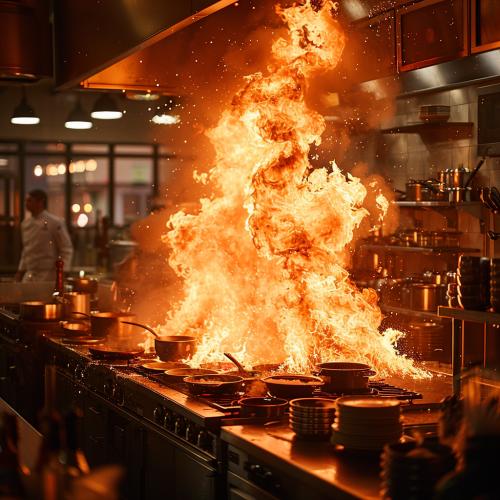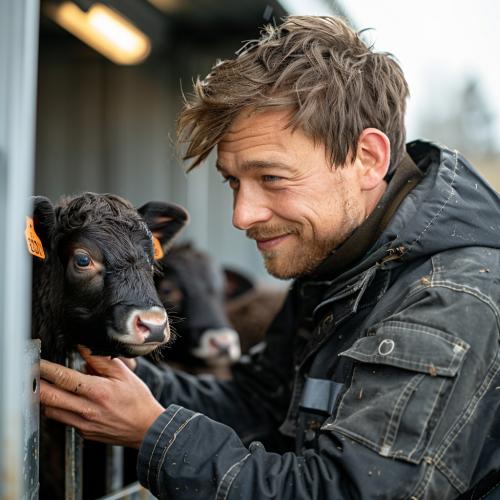Ensuring Safety and Compliance in Mobile Dog and Cat Euthanasia Services
They also provide a way to end a pet’s life at home, in a comfortable and familiar environment, which owners often prefer. Mobile euthanasia services for dogs and cats provide a convenient and compassionate option for those owners faced with the challenge of deciding that euthanasia, rather than long-term medical management, is the best approach. In order to provide owners with a safe and comfortable euthanasia journey for their pets, safety and compliance are paramount, for the welfare of the animals, for providing high-quality veterinary care, for maintaining ethical veterinary practices, and for complying with state and federal regulations. This article provides an overview of the key considerations for veterinarians like myself who run mobile euthanasia services for dogs and cats: equipment and vehicle requirements, the veterinary care itself, how staff are trained, and how these services must comply with regulations.
The Importance of Mobile Euthanasia Services
Mobile euthanasia services are an increasingly important resource for pet owners who prefer a home death for their pet, to avoid the stress and anxiety that they might experience when taken to the vet clinic. It also makes this distressing situation easier for the owners and their family, as they are able to be together at home. Mobile euthanasia is all about making it easier for pets to die with dignity and in a humane way.
Equipment and Vehicle Standards
A factor that impacts the success of mobile euthanasia services is the quality of the equipment and vehicles used. Mobile vets must have appropriate medical equipment to perform a humane euthanasia, consisting of euthanasia solutions, syringes, needles, catheters and sedatives. Lastly, a vehicle must be appropriately equipped to accommodate and provide a private and comfortable space for the owner, pet, and vet.
Veterinary Care Practices
Higher veterinary standards also mean that mobile veterinarians can provide such services in accord with the highest standards of care and compassion. This work involves conducting case histories and consultations with pet owners – discussing the pet’s health condition, quality of life, the process of euthanasia, and providing detailed explanations with respect to any questions and concerns that may arise.
Animals in their care are first sedated, perhaps given an injection that will help calm them, and then the euthanasia solution is injected, usually intravenously, and the animal quickly, peacefully slips away. Whenever a family brings a pet to the veterinarian’s office for euthanasia, the veterinarian has specific legal (in the US) or regulatory protocols (in the UK) to follow.
Meticulous record keeping is important for legal compliance, as well as for continuity of care; this includes ensuring records of the pet’s medical history, the euthanasia procedure itself and, if applicable, its medication. Sensitivity and respect for the privacy of the pet’s owner requires confidentiality in maintaining these records.
Staff Training and Qualifications
The quality of the euthanasia service rests upon competent and well-trained providers – in particular, veterinarians and veterinary technicians (as veterinary assistants are not legally allowed to euthanize animals). As with veterinarians performing euthanasia in brick-and-mortar clinics, veterinarians performing euthanasia in the home must be appropriately credentialed, and both veterinarians and technicians must have the necessary skills to humanely and compassionately perform a euthanasia procedure. Continuing education and professional development are essential for all members of the team in order to continue to follow best euthanasia practices and end-of-life care guidelines.
Training would have to incorporate topics including animal behavior, pain management, euthanasia techniques, and communication. Staff would need to be taught how to deal with animals and people as euthanasia is carried out so that they can approach this sensitive and emotional part of the job professionally, with the appropriate people skills, and help grieving pet-owners as best they can. Communication skills and empathy are essential when dealing with pet owners.
Compliance with Regulatory Standards
Such services are required to comply with regulations and standards over and above simple competency to perform euthanasia for client-owned pets in place. For instance, to practice mobile euthanasia, one must be licensed by the local veterinary licensing board and must hold an approved license to operate in compliance with regulations from an animal health authority, which involves having an up-to-date license and registration to work in both a practice and mobile setting. Protocols such as euthanasia agreement forms, policies and procedures oriented to professionalism, and phone/scheduling practices must be approved by the local veterinary licensing board. The approved instructions and procedures for how to perform euthanasia on pets and the storage and handling of euthanasia solutions, syringes and other medications must also be adhered to.
Other regulations require that noxious and hazardous waste is disposed of appropriately, and does not contaminate the broader environment. Veterinary units can be particularly mobile, and need to have their own systems to minimize any issues from used needles, syringes and other medical-device waste on site as a result of euthanasia.
While national and state regulations also govern the conduct of mobile veterinary euthanasia services, regulation at the local level is an unprecedented phenomenon. For example, these operators must meet local ordinances and standards, such as for operation in residential zones, or zoning rules, or rules of the road. Local regulatory agencies monitor their performance via audits and inspections.
Emergency Preparedness
Appropriate emergency medicine equipment is a must for mobile euthanasia so that veterinarians can act immediately if a problem occurs. Anesthetics, controlled sedatives, and necessary conduction medications like diazepam (Valium) and atropine must be readily available in an expertly-outfitted emergency kit. Vets must also have the ability to properly bandage wounds or other injuries.
Mobile veterinarians require plans to deal with the other contingencies for working, such as breakdowns of the vehicle or extreme weather, by having backup transportation and communication systems, so that they can stay in touch with the pet owner and other veterinary staff.
Conclusion
As veterinary professionals who enact euthanasia while providing mobile dog and cat services, we all have a moral and ethical responsibility to meet the highest standards of safety and compliance. This includes rigorous protocols around maintenance of equipment and vehicles, following best practices in veterinary care, making a significant investment in training staff, and strict adherence to stringent regulatory frameworks. These efforts are instrumental in providing compassionate and reliable mobile euthanasia to the owners of our beloved companions. By implementing these rigorous standards and policies, as well as enacting euthanasia with care and compassion for the higher good of the pet, we are providing a final hour that assures the pet a dignified and peaceful end to their life and provides the pet parent with a collective experience of grief and loss in a respectful and compassionate way.









Comments